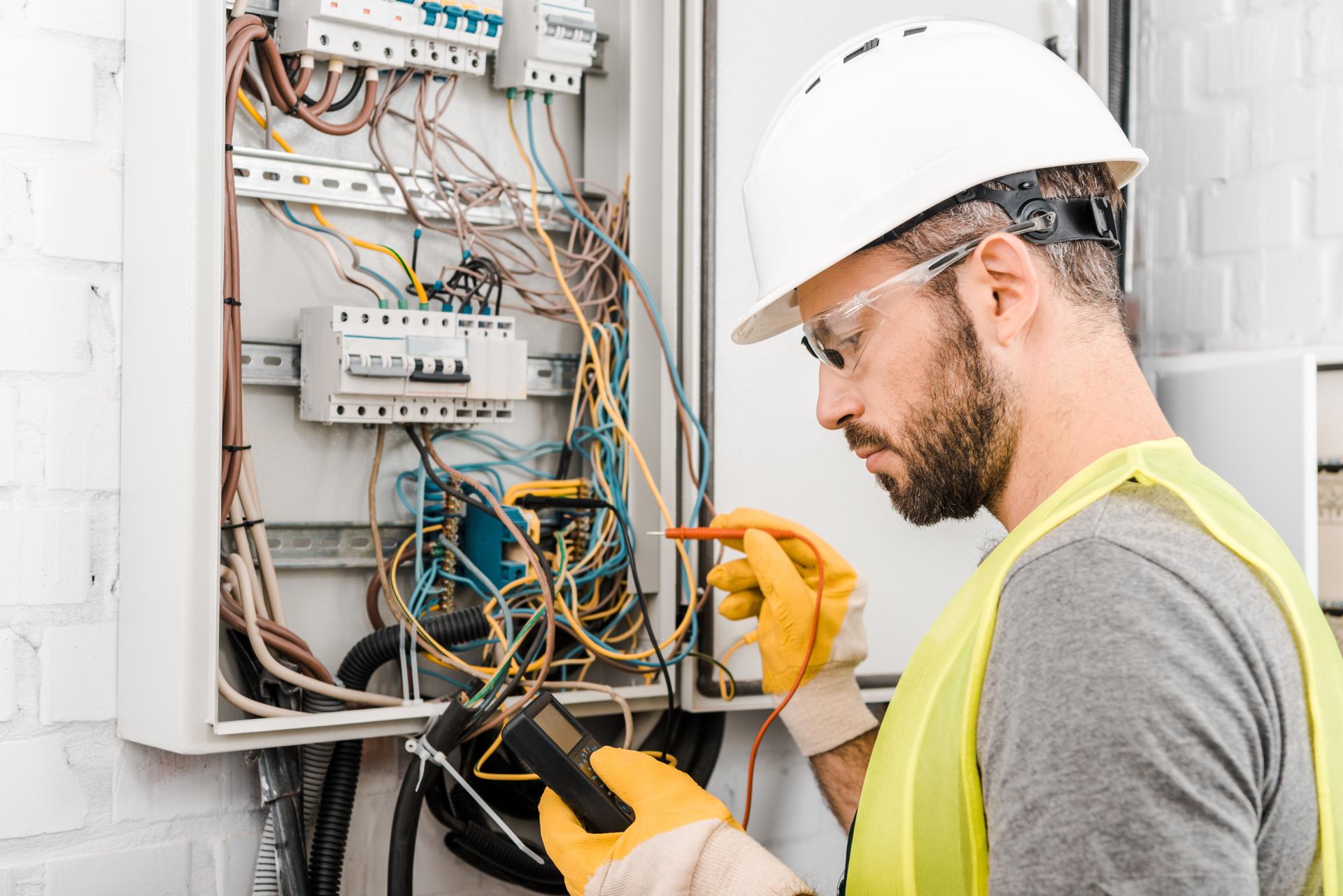An Overview of the Inner Workings of Electrical Wiring in Your Home: A Comprehensive Guide

Electricity is an essential component of our everyday life, powering everything from the lights in our houses to devices we use every day. But electric systems may be a bit complicated and understanding how they work isn’t easy. In this article we’ll go over the components in an electrical circuit, and show how circuits operate to power appliances and devices. Our residential electricians can handle any electrical jobs you need.
Components of an Electrical System
An electrical system has several important components that work to supply power to a home. This includes:
Breaker box: the central distribution point for electrical power in a home, where the electricity is divided into several circuits
Switches and outlets: points where electricity is delivered to appliances and devices
Wiring: the electrical wires that carry electricity from the breaker box to the outlets and switches
Electric appliances, devices and equipment: devices and appliances that use electricity for their functions.
Electrical Circuits
An electrical circuit is a path that lets electricity flow from the source (the breaker box) to appliances and devices within the home. There are two kinds of electrical circuits that can be found in homes that are 120-volt and 240-volt circuits. 120-volt circuits are employed for most household devices and appliances, whereas the 240-volt circuits are utilized for larger appliances such as dryers, air conditioners and electric ones.
Electrical circuits work by completing a loop that allows electricity to be transferred from the source to the appliance or device. The loop consists of a hot cable that carries the electricity, a neutral wire that completes the circuit as well as a ground wire , which is an avenue for the electricity to get to the ground in case the fault occurs.
Understanding Electrical Wiring
Electrical wiring is available in a variety of kinds, such as non-metallic sheathed cable (NM) and armored cable (AC) and conduit. Each kind has its own advantages and disadvantages, and the choice of the wiring type is contingent upon the particular requirements of the installation.
The electricity travels through wires through the creation of electrons through the wire. The electrons flow through the wire from source, to device or appliance returning to the source using the neutral wire. It’s essential to ensure that the wiring is installed and maintained correctly, as defective wiring could lead to electrical dangers like shocks and fires.
Common Electrical Problems
Some common electrical problems that homeowners face include tripping the breakers, flickering lights, and electrical outlets that are not working. The causes of these issues could be by a myriad of causes that include overloading circuits, poor connections, or faulty wiring.
If you experience one of these problems, it is essential to determine the source and take steps to correct the issue. In some instances, this may involve contacting a licensed electrician to look over and fix the wiring.
Concluding as well as a Call to Action
Understanding how electrical wiring operates is essential to ensure the safety and reliability of the electrical system in your home. If you follow the rules laid out in this document to stay secure and avoid potential dangers.
Should you ever have questions or concerns about your home’s electrical system do not hesitate to call Local Electrician Glen Waverley. Our team of licensed electricians have the knowledge and expertise to meet your electrical requirements. Contact us by phone at 1300 933 820 to schedule a consultation.
FAQ
What are the symptoms of faulty electrical wiring?
Signs of faulty electrical wiring can include tripping breakers, flickering lights, and dead outlets, to name a few.
What is the best time to schedule my electrical system at home inspected?
It is recommended to get your home’s electrical system examined by a licensed electrician every 10 years.
What is the life expectancy for electrical wires?
The life expectancy of electrical wiring is based on a variety of factors, including the kind of wiring used, the location it’s located in, and the standard of the installation. The majority of electrical wiring lasts up to 30-years or longer, with proper installation and maintenance.
Can I fix electrical problems by myself or should I hire an electrician?
While some electrical problems are fixable by homeowners, it’s recommended that you hire an experienced electrician for the majority of electrical repairs. Making attempts to fix electrical problems without the proper education and knowledge can be risky and could cause injury or damage to your home.
What should I do if I experience an electrical emergency at home?
In the event of an electrical issue the first step is to cut off power to the affected area by shutting off the breaker or fuse. Contact an accredited electrician to look into and fix the issue as soon as is possible.
If you follow these tips by following these guidelines, you can ensure the security and reliability of the electrical system in your home and reduce potential hazards. Remember, when it comes to electrical repairs and installations, it’s always recommended to rely on the professionals. Reach out to Local Electrician Glen Waverley at 1300 933 820 for all your electrical needs.
